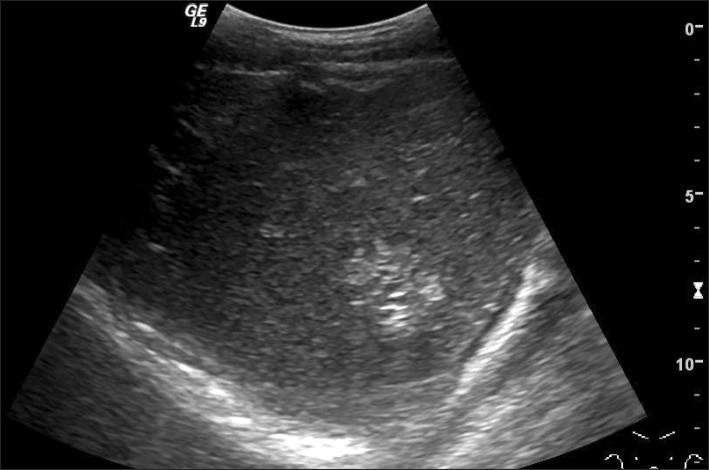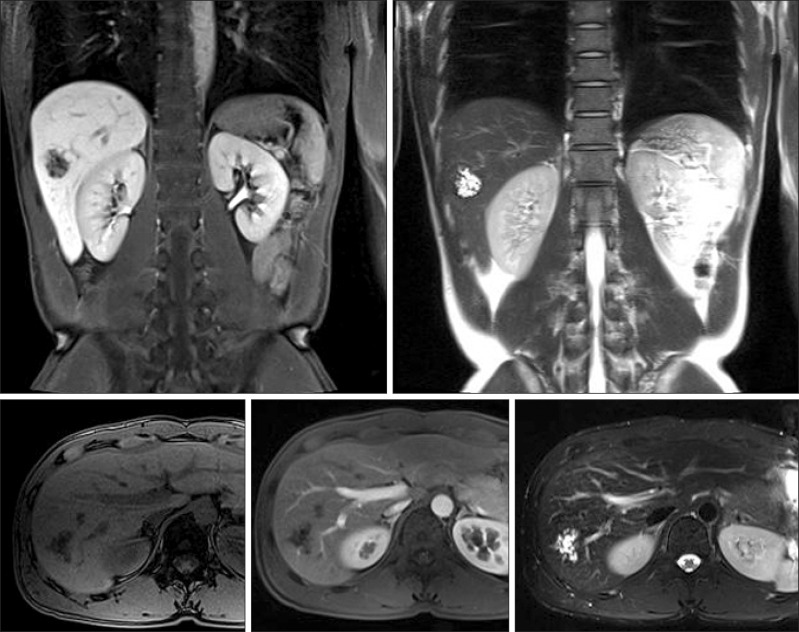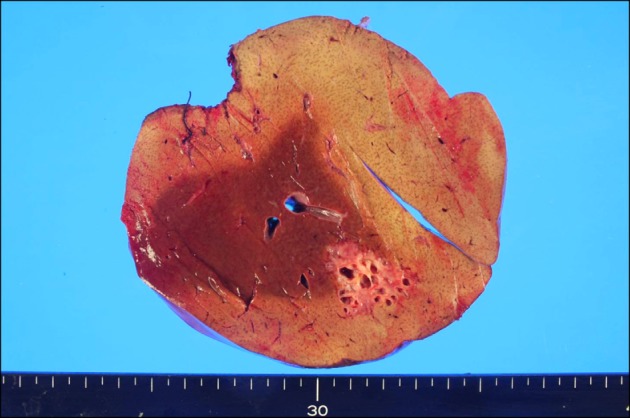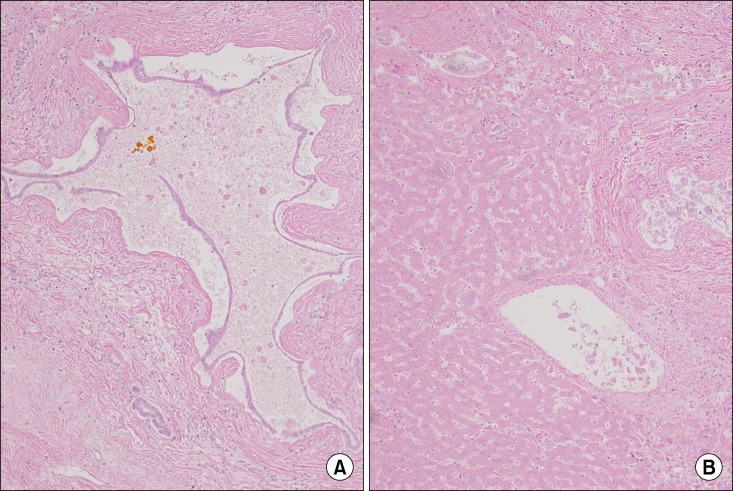Korean J Hepatobiliary Pancreat Surg.
2013 Aug;17(3):131-134. 10.14701/kjhbps.2013.17.3.131.
Peribiliary cysts developed in normal underlying liver: report of a case
- Affiliations
-
- 1Department of Surgery, Chonnam National University College of Medicine, Gwangju, Korea. ckcho@jnu.ac.kr
- KMID: 1472529
- DOI: http://doi.org/10.14701/kjhbps.2013.17.3.131
Abstract
- Peribiliary cysts, known as cystic dilatation, of the extramural peribiliary glands of the bile duct are rare, and are usually detectable under conditions of pre-existing hepatobiliary diseases such as liver cirrhosis. Preoperative diagnosis is often difficult, because they are usually asymptomatic. Distinction of peribiliary cysts from premalignant or malignant cystic lesions is mandatory. Herein, we report a case of peribiliary cyst, which was preoperatively assumed as unilobar Caroli's diseases in healthy young patients and briefly discuss the management of the condition.
Keyword
Figure
Reference
-
1. Nakanuma Y, Kurumaya H, Ohta G. Multiple cysts in the hepatic hilum and their pathogenesis. A suggestion of periductal gland origin. Virchows Arch A Pathol Anat Histopathol. 1984; 404:341–350. PMID: 6093347.2. Terada T, Nakanuma Y. Pathological observations of intrahepatic peribiliary glands in 1,000 consecutive autopsy livers. II. A possible source of cholangiocarcinoma. Hepatology. 1990; 12:92–97. PMID: 2165033.
Article3. Nakanuma Y. Peribiliary cysts: a hitherto poorly recognized disease. J Gastroenterol Hepatol. 2001; 16:1081–1083. PMID: 11686831.
Article4. Nakanuma Y. Peribiliary cysts have at least two different pathogeneses. J Gastroenterol. 2004; 39:407–408. PMID: 15168259.
Article5. Kida T, Nakanuma Y, Terada T. Cystic dilatation of peribiliary glands in livers with adult polycystic disease and livers with solitary nonparasitic cysts: an autopsy study. Hepatology. 1992; 16:334–340. PMID: 1639342.
Article6. Fusai G, Tucker O, Nik Sulaiman NM, et al. Peribiliary cysts can mimic Caroli's disease: a case report. Int J Surg Pathol. 2005; 13:379–382. PMID: 16273200.
Article7. Pang T, Kuo S, Hugh TJ, et al. The role of peribiliary cysts in biliary obstruction. ANZ J Surg. 2010; 80:699–702. PMID: 21040329.
Article8. Ikenaga N, Chijiiwa K, Otani K, et al. A case of peribiliary cyst presenting with obstructive jaundice. J Gastrointest Surg. 2009; 13:174–176. PMID: 18071835.
Article
- Full Text Links
- Actions
-
Cited
- CITED
-
- Close
- Share
- Similar articles
-
- A Case of Peribiliary Cysts
- A Case of Hepatic Peribiliary Cysts in a Patient with Alcoholic Liver Cirrhosis
- Peribiliary Cysts with Intrahepatic Bile Duct Obstruction: A Case Report
- Morphological Changes of Hepatic Microcirculation in N-diethylnitrosamine Induced Cirrhotic Rat Liver
- Endoscopic Interlaminar Excision of a Rare Lumbosacral Discal Cyst: A Case Report






